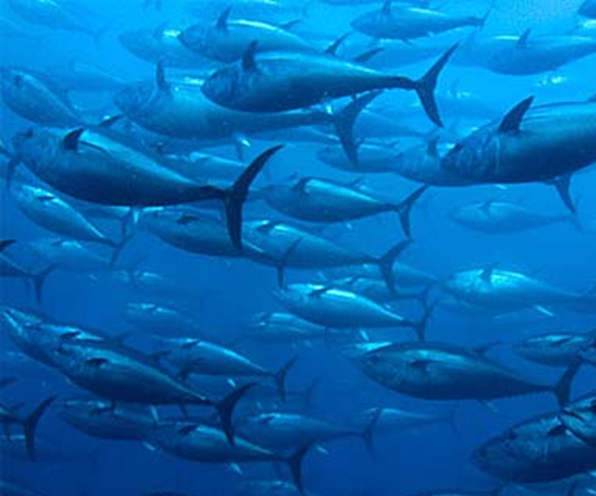
| Home | FAQs | Book Contents | Updates & News | Downloads |

Everyone knows that the reason why sharks, dolphins and tuna fish have similar shapes is because they all need to travel as fast as they can through a resistant fluid without using too much energy. If they weren't that shape they wouldn't be able to live the life that they lead. Solutions converge on similar answers where they press hardest against imposed constraints. There are plenty of marine creatures that don't depend on rapid movement, starfish, crabs and sea horses all have distinct body shapes to match their preferred habitats and habits.
In order to locate and exploit subsurface resources oil companies employ a wide range of different specialists, each with their own way of seeing the world, their own tools and tricks. Within each discipline there is a fairly free flow of discussion about the advantages and drawbacks of different tools, both from personal discussion and personnel movement. Innovations that have benefits so clear that even corporate management can see it are rapidly adopted across the whole industry. For example Landmark's workstations in the 1980s so completely changed the application of seismic that any company that didn't switch to them (or their imitators) ended up on the scrap heap of history. It seems to me that the way that the work is done inside each specialisation is, like the shape of fast marine animals, driven towards conformity. There are only so many ways that production measurements can be analysed, the features of the "best" structural modelling packages find their ways into other software, and the best schools learn (and teach) all the new tricks.
There may be consensus within each topic but my experience is that there is much less consistency in the way that these specialisms are coordinated. The interactions between domains change from one oil company to the next, even while the ways that each individual group of specialists works has become more uniform. There are some consistent features, for example, every expert knows that the data they are forced to rely on is badly documented and of dubious quality, but despite this the results they deliver are trustworthy and so easy to understand that they don't need documentation. These types of undocumented (and mutually contradictory) assumptions actually drive the real business processes, and while many of them are uniform there is enough variation to ensure every oil company's activities have their own unique interactions.
Consider the tuna as an example. To move as fast as it does it must, of course, be streamlined, but that's not enough, it also needs muscles to push it through the water and those require a specialised respiration and circulatory system to power them. It is the context, the availability of a high energy food supply (such as pilchards, anchovies and sardines) that both keeps the tuna going, and ensures that the ability to swim fast is crucial for the tuna's survival. Thinking about the interactions is more challenging than considering each of the elements in isolation, but it is also much more interesting (and potentially rewarding).
Article 27 |
Articles |
RSS Feed |
Updates |
Intro |
Book Contents |
All Figures |
Refs |
Downloads |
Links |
Purchase |
Contact Us |
Article 29 |